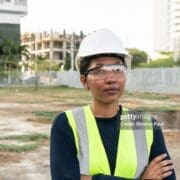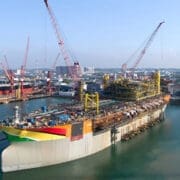Why Do U.S. Lenders Remain Wary of the Caribbean?
By News Americas Business Desk
News Americas, NEW YORK, NY, Mon. June 23, 2025: Despite its postcard-perfect beaches, booming tourism market, high-priced real estate, and growing demand for housing and infrastructure, the Caribbean continues to face an uphill battle when it comes to attracting U.S. lenders and investors.
Multi-million dollar deals can languish for months or be rejected altogether. And even when financing is secured, borrowers often face steep upfront costs and premium interest rates.
Ben Mizes, Co-Founder of Clever Real Estate and a licensed real estate agent who has closely studied investor behavior in emerging markets, told News Americas that while, “the Caribbean has a lot going for it — beautiful scenery, more tourists coming in, and a growing need for better housing and infrastructure,” many investors still view the region as a risky place to put their money.
“Problems like unclear land ownership, slow permitting processes, and unpredictable politics make things tricky and delay projects,” Mizes explained. “Investors usually prefer places with clear legal systems and reliable data, which is where the Caribbean falls short.”
“To make progress, we need to lower the risks at a policy level, show real returns, and work with investors who get how these markets operate,” he added. “That’s where real growth can start.”
His views are echoed by other investors working across the region. Luke Babich, Founder and CEO of List with Clever, has been leading renewable energy projects in emerging markets, including the Eastern Caribbean.
“From my experience, the biggest challenges are unclear land titling, slow permitting processes, and limited creditworthy offtakers,” Babich told NAN. “Political risk and currency volatility also deter institutional investors.”
But those aren’t the only barriers keeping lenders at bay.
Financial experts point to several underlying challenges that compound investor hesitation. Small market size, fragmented legal frameworks across island nations, and currency volatility present major hurdles. High disaster risk, limited insurance coverage, and the absence of robust credit reporting systems further undermine lender confidence.
Many Caribbean projects also lack the investor-ready packaging – complete feasibility studies, environmental clearances, and professional financial modeling—that global lenders expect, says Invest Caribbean.
“It’s rarely one structure fits all across the islands,” Babich explained. “High compliance and due diligence costs often make even small deals unappealing to institutional lenders.”
Still, both Mizes and Babich agree that positive change is on the horizon.
“When governments provide guarantees or partner with DFIs, deals become more viable,” Babich said.
Mizes points to progress in countries working to modernize land registries, speed up development approvals, and create clearer benefits for investors. “Some countries are moving towards better land records, faster development approvals, and clearer benefits for investors, which is starting to draw in some serious money,” he noted.
Babich cites a recent success story as proof of that momentum. “We closed the deal by leveraging blended finance and strong local legal support. With the right partnerships and risk mitigation, viable projects can get across the line,” he said, referencing a $25 million solar project in St. Lucia.
For Mizes, the key to unlocking the region’s investment potential lies in boosting investor confidence through transparency, reliable enforcement, and tangible returns.
“The Caribbean has all the ingredients for growth — but to unlock serious capital, we need to reduce risks at the policy level, streamline project development, and work with investors who truly understand the region,” Mizes emphasized. “That’s when real growth will begin.”









